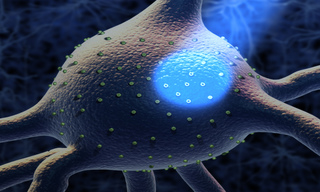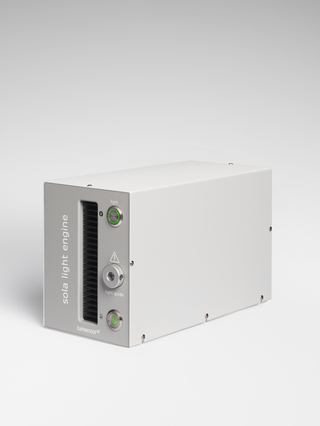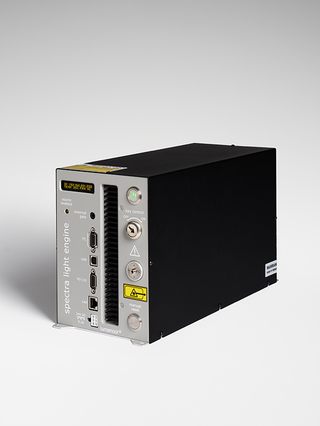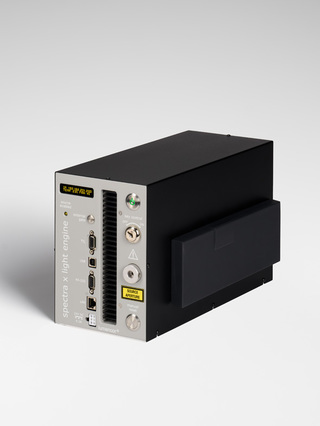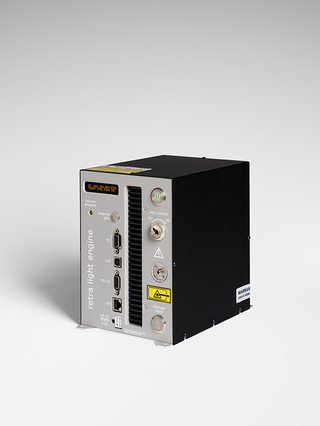Optogenetics
Optogenetic techniques provide spatially and temporally resolved data on the functional complexity of neural networks, while avoiding invasive interrogation using microelectrodes. “Opto” refers to transduction of light into electrical activity in the cells of interest. “Genetics” refers to transgenic expression of the transducers —photoactivatable ion channel proteins. Illumination sources used for optogenetic stimulation must meet exacting requirements in terms of spectral, spatial and temporal output characteristics. In particular, because nerve impulses occur on a timescale of a few milliseconds, the source light output must be controllable on the same timescale. The primary spectral output requirement is maximal overlap integral of the light engine spectral output with the action spectra of photoactivatable ion channel proteins (475 nm for stimulation with channelrhodopsin and 575 nm for inhibition with halorhodopsin). Lumencor’s solid-state light engines house light sources that provide these capabilities and more, leading to their widespread use in optogenetics light delivery in neuroscience and other applications.
Commonly Used Products
Optogenetics



